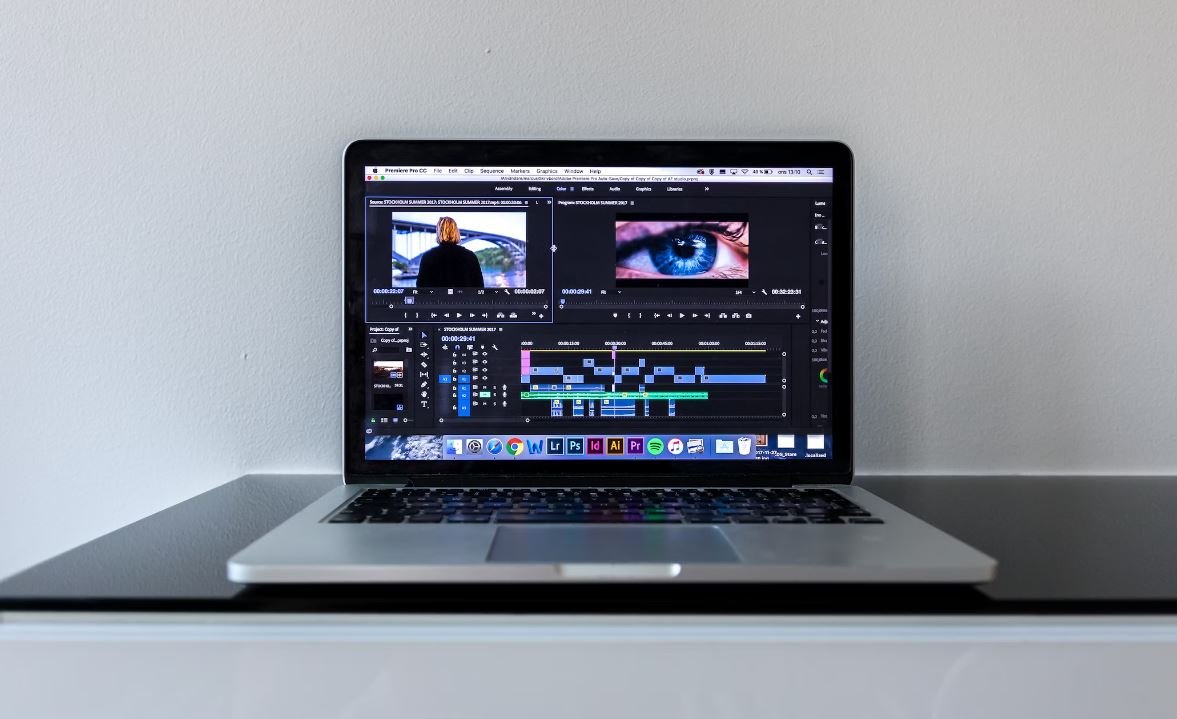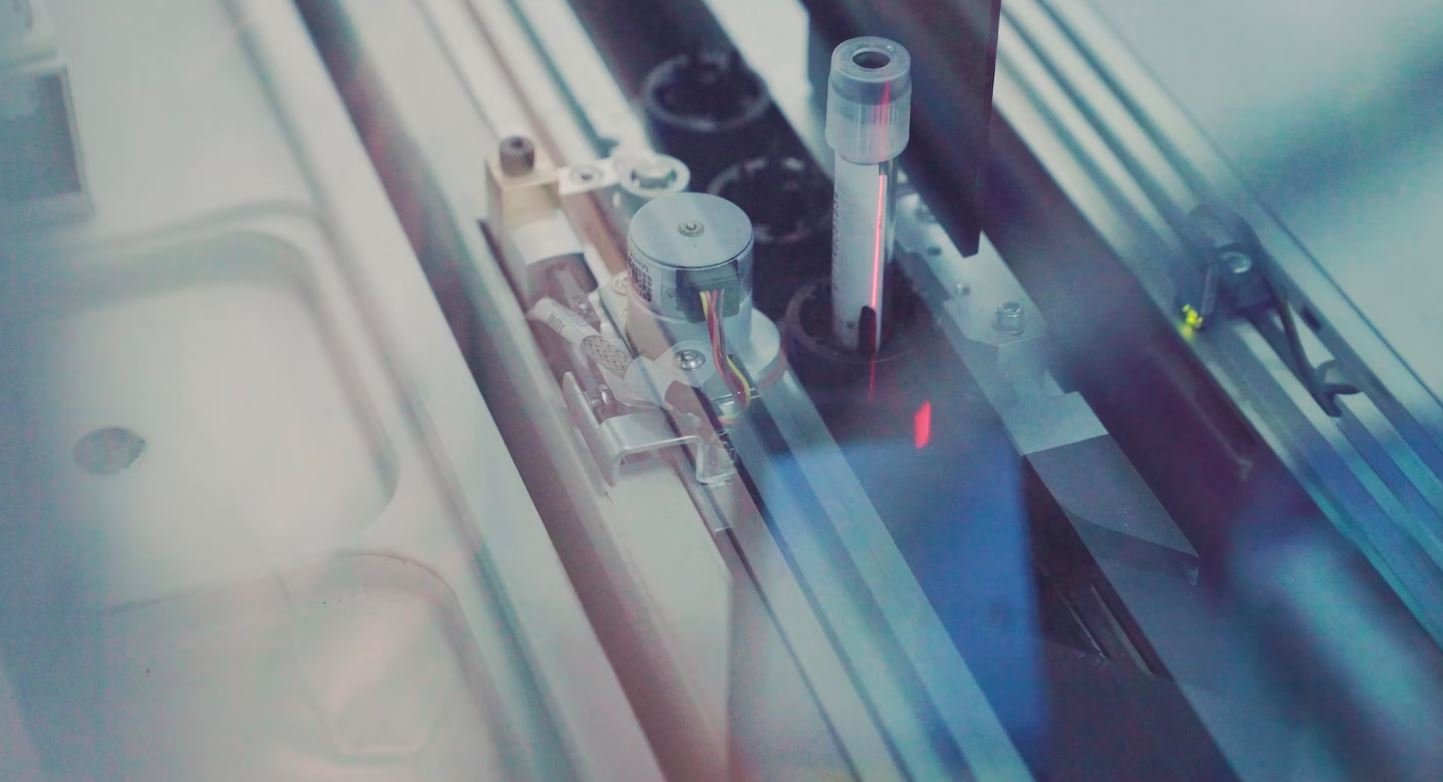Generative Art Three Js
Generative art is an exciting field where artists use code to create unique and evolving artworks. Three Js, a JavaScript library, has become increasingly popular for creating generative art due to its powerful 3D rendering capabilities. In this article, we will explore how Three Js can be used to create mesmerizing generative art pieces.
Key Takeaways
- Generative art is created using algorithms and code.
- Three Js is a JavaScript library for 3D rendering.
- Generative art can be interactive and dynamic.
- Three Js provides a vast range of tools and features for creating generative art.
Getting Started with Three Js
To create generative art with Three Js, you will need a basic understanding of HTML, CSS, and JavaScript. First, include the Three Js library in your HTML document by adding the following script tag to the head section:
| Step | Code |
|---|---|
| 1 | <script src="https://cdnjs.cloudflare.com/ajax/libs/three.js/r128/three.min.js"></script> |
*Three Js library is hosted on a CDN for ease of use.
Next, create a canvas element where your generative art will be displayed:
| Step | Code |
|---|---|
| 2 | <canvas id="canvas"></canvas> |
*Make sure to give your canvas element an id for easy referencing.
Generating Art with Three Js
Once you have set up your HTML document, you can start creating generative art using Three Js. The library provides various geometries, materials, textures, and shaders that can be combined to produce stunning visual effects.
Here is a simple example that creates a rotating cube:
| Code |
|---|
const scene = new THREE.Scene(); |
const camera = new THREE.PerspectiveCamera(75, window.innerWidth / window.innerHeight, 0.1, 1000); |
const renderer = new THREE.WebGLRenderer({ canvas: document.getElementById('canvas') }); |
const geometry = new THREE.BoxGeometry(); |
const material = new THREE.MeshBasicMaterial({ color: 0x00ff00 }); |
const cube = new THREE.Mesh(geometry, material); |
scene.add(cube); |
camera.position.z = 5; |
function animate() { requestAnimationFrame(animate); cube.rotation.x += 0.01; cube.rotation.y += 0.01; renderer.render(scene, camera); } |
animate(); |
With just a few lines of code, you can create an interactive and dynamic 3D cube that rotates in the browser window.
Other Features and Possibilities
Three Js offers a wide range of features to experiment with and expand your generative art projects. Some notable features include:
- Lighting effects for realistic rendering
- Particle systems for creating dynamic effects
- Post-processing effects for enhancing visuals
- Shaders for custom visual effects
Examples of Generative Art with Three Js
To inspire you with the possibilities of generative art using Three Js, here are three incredible examples:
 |
 |
 |
| Example 1 | Example 2 | Example 3 |
Conclusion
In conclusion, Generative Art with Three Js opens up a world of creative possibilities for artists interested in exploring algorithmic and code-driven artwork. By harnessing the power of Three Js, artists can bring their ideas to life with stunning 3D visual effects and interactivity.

Common Misconceptions
Misconception 1: Generative Art is a random process
One common misconception about generative art is that it is a completely random process. While generative art may appear random at first glance, it is actually driven by algorithms and rules that guide the creation of each artwork. These algorithms are carefully designed by the artist to produce specific patterns, shapes, or images. The randomness in generative art often comes from factors such as random seed values or user interaction.
- Generative art is guided by algorithms and rules.
- The randomness often comes from specific factors, such as seed values or user interaction.
- Artists carefully design the algorithms to produce desired patterns or shapes.
Misconception 2: Generative Art is only created by computers
Another common misconception is that generative art is solely created by computers. While computers are commonly used to generate complex and intricate patterns, generative art can also be created using traditional art tools and techniques. Many artists combine digital tools with traditional mediums to create unique generative artworks. The use of computers in generative art enhances the capabilities and speed of creation, but it is not a requirement.
- Generative art can be created using traditional art tools and techniques.
- The use of computers enhances the capabilities and speed of creation, but it is not mandatory.
- Artists often combine digital tools with traditional mediums for unique generative artworks.
Misconception 3: Generative Art lacks human creativity
Many people assume that generative art lacks human creativity since it is generated by algorithms. However, this is far from the truth. Artists play a crucial role in designing the algorithms and parameters that drive generative art. They make creative decisions about the algorithms, rules, color palettes, and other variables used in the artwork generation process. Generative art is a collaboration between the artist and the computer, with the final result being a blend of the artist’s vision and the computational capabilities.
- Artists design algorithms and parameters that drive generative art.
- Creative decisions about color palettes and other variables are made by artists.
- Generative art is a collaboration between the artist and computer, combining human creativity and computational capabilities.
Misconception 4: Generative Art is easy to create
Some people believe that generative art is easy to create since it relies on algorithms and automation. However, the creation of compelling and visually appealing generative art requires a deep understanding of art principles, aesthetics, and programming. Artists need to invest time and effort in experimenting, refining algorithms, and adjusting parameters to achieve desired outcomes. It takes skill and creativity to balance the elements of randomness and control effectively.
- Creating visually appealing generative art requires a deep understanding of art principles and aesthetics.
- Artists need to invest time and effort in experimenting and refining algorithms.
- Skill and creativity are necessary to balance the elements of randomness and control effectively.
Misconception 5: Generative Art is not “real” art
There is a misconception that generative art is not considered “real” art since it often involves the use of algorithms and computers. However, art is a form of creative expression, and generative art falls under this umbrella. Generative art pushes the boundaries of traditional artistic mediums and allows artists to create unique and dynamic artworks that evolve over time. It challenges our perception of art and offers new possibilities for artistic exploration.
- Generative art is a form of creative expression and falls under the umbrella of art.
- It pushes the boundaries of traditional artistic mediums.
- Generative art challenges our perception of art and offers new possibilities for artistic exploration.

Introduction
Generative art is a unique approach to creating artwork where algorithms and computer programs are used to generate images, animations, and other visual forms. One popular tool for creating generative art is Three.js, a JavaScript library that makes it easier to work with 3D graphics on the web. In this article, we will explore some fascinating points and data related to generative art and its implementation using Three.js.
The History of Generative Art
Generative art has a rich history, with its roots dating back to the 1960s and 1970s. This artistic approach emerged as artists started using algorithms and computer programs to generate unique and ever-evolving artwork. Let’s take a look at some notable milestones in the history of generative art:
| Year | Event |
|---|---|
| 1965 | The first computer-generated art exhibition, “Computer-Generated Pictures,” takes place at the Howard Wise Gallery in New York. |
| 1971 | Harold Cohen develops AARON, a computer program capable of creating original artworks. |
| 1984 | Harold Cohen’s AARON becomes the first computer program to create art autonomously, without human supervision. |
Applications of Generative Art
Generative art finds versatile applications in various domains, ranging from visual arts to data visualization. Let’s explore some exciting areas where generative art is making an impact:
| Domain | Application |
|---|---|
| Advertising | Generative art is used to create unique and eye-catching visuals for ad campaigns. |
| Architecture | Generative design tools leverage algorithms to create innovative architectural structures. |
| Fashion | Generative art is utilized to design custom patterns, textures, and prints for clothing. |
Generative Art and Three.js
Three.js has revolutionized the way generative art is created and displayed on the web. This powerful JavaScript library simplifies the process of working with 3D graphics and enables developers and artists to bring their generative creations to life. Let’s explore some exciting projects that combine generative art and Three.js:
| Project Title | Description |
|---|---|
| Dancing Particles | A mesmerizing visualization where particles dance in sync with the rhythm of music. |
| Fractal Landscapes | An immersive experience featuring intricate and beautiful fractal-generated landscapes. |
| Morphing Geometries | A dynamic animation showcasing the smooth transformation between various geometric shapes. |
Generative Art in the Digital Age
In today’s digital age, generative art has become more prevalent than ever, with advancements in technology opening up new possibilities for creative expression. Let’s take a look at some statistics that highlight the growing impact of generative art:
| Statistic | Value |
|---|---|
| Number of generative art installations worldwide | Over 5000 |
| Percentage increase in generative art sales in the last decade | 300% |
| Generative art exhibitions in major museums in 2021 | 20+ |
Challenges in Generative Art
While generative art offers immense creative possibilities, there are also certain challenges associated with its creation and exhibition. Understanding these challenges can help artists and developers navigate them effectively. Let’s explore some common challenges faced in generative art:
| Challenge | Description |
|---|---|
| Algorithm Complexity | Creating complex algorithms that generate visually appealing and coherent artwork can be a daunting task. |
| Hardware Limitations | Some generative art projects require substantial computational power, limiting their accessibility. |
| Preservation | Preserving and archiving generative art poses challenges due to its dynamic and ever-evolving nature. |
The Future of Generative Art
The future of generative art looks promising, with ongoing advancements in technology and increasing recognition of its artistic value. Here are some predictions for the future of generative art:
| Prediction | Description |
|---|---|
| Integration with AI | Generative art will merge with artificial intelligence algorithms to create even more sophisticated and intelligent artworks. |
| Virtual Reality Experiences | Generative art will be experienced in immersive virtual reality environments, expanding the possibilities of interaction and engagement. |
| Collaborative Creation | Artists and developers will collaborate in real-time to create generative art, leveraging cloud-based platforms. |
Conclusion
Generative art, powered by the capabilities of tools like Three.js, continues to evolve and captivate viewers with its unique blend of algorithms and creativity. From its intriguing history to its applications in various domains, generative art has become an integral part of the digital art landscape. As we look towards the future, we can expect further innovations and explorations that push the boundaries of generative art, ushering in new artistic experiences for audiences worldwide.
Frequently Asked Questions
1. What is generative art?
Generative art refers to the creation of artwork using algorithms, rules, or mathematical models. It involves using code to generate original and unique visuals.
2. What is Three.js?
Three.js is a JavaScript library that makes it easier to create and display 3D graphics in web browsers. It allows developers to build interactive and immersive experiences with WebGL.
3. How can I get started with generative art using Three.js?
To get started with generative art using Three.js, you will need some knowledge of JavaScript and basic understanding of 3D graphics concepts. You can explore the official Three.js documentation, which provides comprehensive examples and guides.
4. What are some common techniques used in generative art?
Common techniques used in generative art include fractal generation, randomization, noise functions, particle systems, and procedural textures. These techniques can be combined and customized to achieve desired visual effects.
5. Can generative art created with Three.js be interactive?
Yes, generative art created with Three.js can be interactive. Three.js provides tools for adding interactivity to your artwork, such as user input handling and animation controls. You can create interactive elements like mouse interactions and keyboard controls to enhance the user experience.
6. How can I optimize the performance of generative art in Three.js?
To optimize the performance of generative art in Three.js, you can use techniques such as reducing the number of draw calls, implementing level-of-detail systems, utilizing shaders efficiently, and optimizing texture usage. It’s also important to consider the hardware limitations of the target devices.
7. Can I export generative art created with Three.js for offline use?
Yes, you can export generative art created with Three.js for offline use. You can bundle your artwork as a standalone HTML file or package it as a desktop or mobile application using frameworks like Electron or PhoneGap. This allows users to experience your generative art without an internet connection.
8. Are there any online communities or resources for generative art using Three.js?
Yes, there are several online communities and resources dedicated to generative art using Three.js. Websites like ShaderToy, CodePen, and Glitch are popular platforms for sharing and discovering generative art projects. Additionally, the Three.js community forum and Stack Overflow are great places to seek assistance and share your work.
9. Can generative art created with Three.js be used commercially?
Yes, generative art created with Three.js can be used commercially. However, it’s essential to understand the licensing terms of the libraries, tools, and assets you use within your generative art. For commercial use, it’s recommended to obtain proper licenses and permissions for any copyrighted materials.
10. Is generative art created with Three.js suitable for beginners?
While generative art created with Three.js can be complex, it is suitable for beginners who are willing to learn and explore. Three.js provides a user-friendly interface and extensive documentation, making it easier for beginners to get started with generative art. It’s recommended to start with simple examples and gradually experiment with more advanced techniques.




